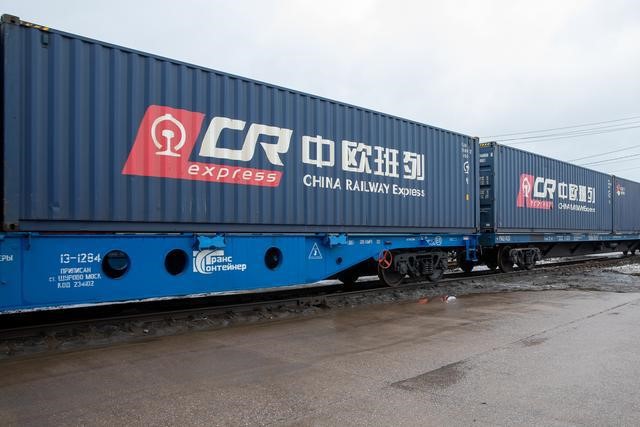By writer Zhou Hanmin and translated by Xuye
It has been eight years since Chinese President Xi Jinping put forward the Belt and Road Initiative (BRI) in 2013, and the BRI has become the most important public goods in the world after the World War II. How to turn the strategic vision into reality? There are several factors behind the success.
The first is the path. The path of the Belt and Road is policy communication, infrastructure connectivity, unimpeded trade, financial integration, and people-to-people bond. Close people-to-people ties are the core of the path. President Xi offered China's solutions and commitments at the previous Belt and Road Forum for International Cooperation in Beijing in 2017 and 2019.
The second is the principle. The extensive consultation, joint contribution and shared benefits are the BRI’s principle. President Xi has emphasized on many occasions that the initiative is a public road open to all, not a private path owned by one single party. That's what we have said and done. Over the past eight years, the Chinese government has reached 206 cooperation agreements with 140 countries and 32 international organizations. No other initiative in the world makes such strong action as the BRI in the period.
The third is the action. Chinese companies actively respond to President Xi’s call and extend their businesses to the rest of the world. From 2013 to 2020, China’s total imports and exports with Belt and Road countries exceeded 9.2 trillion U.S. dollars, with its annual imports and exports volume accounting for about a quarter of China's total goods trade. The proportion even rose to 29.1 percent in 2020. China’s direct investments in Belt and Road countries surpassed 136 billion U.S. dollars during the period. Despite shrinking global foreign direct investment, China’s non-financial direct investments in Belt and Road countries reached 11.29 billion U.S. dollars from January to July this year, a year-on-year increase of 9.9 percent. China has also established more than 80 economic cooperation zones in foreign countries and regions. The infrastructure connectivity promotes trade cooperation, financial integration, and people-to-people bond.
It is worth mentioning that China-Europe freight trains made 10,030 trips from January to August this year, an increase of 32 percent over the same period last year. The comprehensive round-trip shipping container rate of the China-Europe freight trains exceeded 97.9 percent during the period. The trade expansion was on the basis of the principle of extensive consultation, joint contribution and shared benefits.

The key role of Chinese private companies in the construction of the Belt and Road is worthy of our attention and further study. China’s private economy has contributed more than 50 percent of the country’s total tax revenue, 60 percent of GDP, 70 percent of the national scientific and technological innovation, 80 percent of urban employment. It accounts for 94 percent of 140 million companies and self-employed individuals. To sum up, China’s private sector plays a key role in the construction of the BRI.
More than 27,500 Chinese investors, of which 27.4 percent were from private companies, 2.4 percent were self-employed, and 50.5 percent were from limited liability companies and incorporated companies, established 44,000 OFDI companies in 188 countries and regions by the end of 2019. Nearly 11,000 Chinese companies have established their overseas branches in 63 Belt and Road countries, involving 18 major industries. About 37 percent of China’s top 500 private enterprises participate in the construction of the Belt and Road each year. These companies are building a new type of international division of labor in countries and regions along the Belt and Road route.
In terms of trade, total imports and exports of Chinese private companies with Belt and Road countries surpassed 600 billion U.S. dollars in 2017, accounting for 43 percent of the total volume. In terms of investment model, Chinese private companies had launched about 800 M&A projects in Belt and Road countries by the end of 2018, with each project worth an average of 960,000 U.S. dollars. In terms of industry type, trade covers various industries including agriculture, clean energy and bio-pharmaceutical, with manufacturing still taking the lion’s share. Companies in new service industries are also gradually expanding their businesses globally.
In going global, Chinese private companies establish their economic and trade cooperation zones, invest and build factories, exploit energy, mining, agricultural and animal husbandry resources, undertake foreign projects and conduct labor cooperation. Integrated development has been achieved through aligning Chinese upstream and downstream industries with industries of host countries, conducting international production capacity cooperation and technology transfer, and extending industrial chains. The companies work with the host countries to promote infrastructure construction, enhance technical cooperation, industrial development, and share their experiences on platform construction and development. At the same time, they offer many jobs for the host countries, promote environmental protection and green development, and build a batch of project concerning the people’s livelihood.
All in all, we could see that the Chinese private business plays an important role in turning the strategic vision into reality. I feel very proud of I have seen and heard when visiting Chinese private companies in Russia, Vietnam, Cambodia, Iran, Nepal, and Kazakhstan. I sincerely hope that Chinese private companies can continue to give full play to their own advantages in the new journey of high-quality development of the Belt and Road, and promote the spirit of the Silk Road and excellent Chinese culture, so as to create win-win situations and make greater contributions.
(ASIA PACIFIC DAILY)
 简体中文
简体中文

